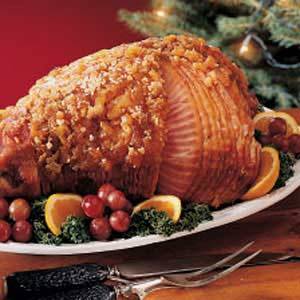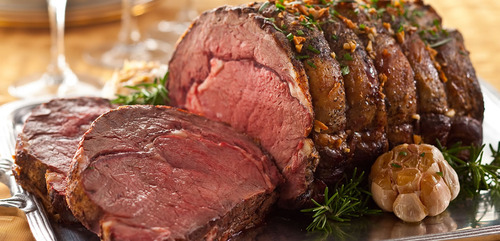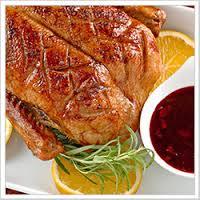Sage is here to help.
Feel like you could be eating better? Not sure what to change or where to look? Sage Nutritious Solutions make it easy for you to discover the wide, wonderful world of balanced, healthy, bangin' food.
Holiday Meats: which is best?
The holidays are a time of year to enjoy the bounty of the season. Specifically, the over abundance of food found at most holiday tables. Meat tends to be the centerpiece of most tables (with the exception of vegetarians and vegans), but which holiday protein is best? Here at The-Sage, we have broken down the 5 most popular meats with nutrition information and popular cooking techniques!
 Turkey Breast (3 oz. serving)
Turkey Breast (3 oz. serving)
Turkey breast is a terrific lean protein for the holidays! With only 90 calories and 1 gram of fat per serving, turkey breast also has zero saturated fat. One serving contains approximately 21 grams of protein and is a source of Omega-6 and Omega-3 fatty acids, though not significant for either. Basically, turkey contains these fatty acids, but do not rely on turkey to provide substantial amounts. Other nutrients include: 17% daily value of vitamin B2, 30% daily value of selenium, and 14% daily value of phosphorus. To minimize adding extra fat and sodium during preparation, use fresh herbs, citrus, and vegetables as stuffing or as a marinade. Brines are also a great way to create a delicious and tender turkey, but contribute to higher sodium content.

Ham, Cured (3 oz. serving)
Baked ham is another commonplace protein found on many holiday tables. Depending on how lean the ham is, one serving has approximately 140 calories, 9 grams fat, and 750mg sodium (which is almost half of your daily value). One serving also has between 16-21 grams of protein (depending on type). Ham is not significant in any vitamins, minerals, or fatty acids and should be eaten in small amounts. Bone-in hams generally have more flavor than boneless hams, but also have higher fat content. Hams tend to be rubbed with bourbon, brown sugar, ground brown mustard, or fruit such as pineapples and cherries. These may contribute to a nice glaze, but also significantly increases sugar content.

Roast Beef, lean (4 oz. serving)
A beautifully tied and well-seasoned roast beef can easily be a centerpiece to any holiday table. A traditional protein for Christmas, one serving has approximately 225 calories, 10 grams of fat, and 32 grams of protein. One serving also contains about 25% daily value of iron and 100% daily value of vitamin B12. Using butchers twine, wrap the roast into a log shape. Season with herbs and spices for a sodium-reduced flavor enhancer. Add water to the bottom of the roasting pan to collect the drippings from the beef; reduce on the stove to offer a flavorful au jus for guests.
 Goose (3 oz. serving)
Goose (3 oz. serving)
The goose is a one of the most traditional proteins found on tables during Christmastime. Not a fan favorite for every guest, a perfect cooked goose can be delicious and add interest to a holiday dinner. One serving contains approximately 255 calories, 18 grams fat, and 21 grams protein. Goose also provides about 21% daily value of iron, 18% daily value of niacin, 21% daily value of phosphorus, and 27% daily value of selenium. Goose also is a relatively significant source of Omega-6 and Omega-3 fatty acids when compared with other holiday proteins listed here. Goose should be stuffed with fruits and vegetables, rubbed with your own herb and spice blend, and roasted. Goose is a fatty protein which means it is extremely tender and tasty, but watch out for the second helpings!
 Duck (3 oz. serving)
Duck (3 oz. serving)
This protein is by far the fattiest among the others in this list. Christmas duck is definitely a traditional addition to the holiday table, but should accompany a leaner protein to offer guests another choice (such as lean roast beef). One serving contains approximately 339 calories, 33 grams of fat, 12 grams saturated fat, and 21 grams protein. Duck also provides approximately 31% daily value of cholesterol and a significant source of Omega-6 fatty acids (which is not necessarily good). Duck is another fatty protein and should be tied, roasted, and stuffed with fruit to offset the distinct gamey flavor. Traditional recipes call for additions of maple syrup, brown sugar, and other sweet flavorings for this same reason.
Whichever protein you choose for the holidays, be sure to bulk up on the variety of delicious fruit and vegetable side dishes that accompany your meal! Holidays are a time to indulge, so don’t shy away from all of the delicious options out there. Choose the one right for your lifestyle and as always…
Happy Eating (and Happy Holidays!)
